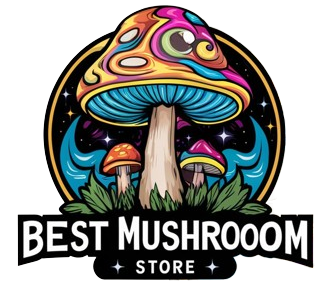DMT (dimethyltryptamine) is a powerful psychedelic that has been used for centuries by indigenous people in South America. DMT is found in many different plants, and even in human brains. In this article, we will discuss the DMT natural sources and how to use them safely!
What Is DMT?
DMT (N,N-Dimethyltryptamine) is a powerful psychedelic drug that has been used for centuries by indigenous people in South America for insights and spiritual experiences. DMT is found in many plants, but the most common source is from the Ayahuasca plant. DMT is also found in the human body and is thought to be released during certain states of consciousness, such as dreaming. DMT has a very short half-life, so it must be smoked or injected for the user to experience its effects.
DMT is a Schedule I drug in the United States and is illegal to possess or use. However, natural sources of DMT are not considered controlled substances, but the DMT natural sources with high levels are. Such plants include Ayahuasca and Changa. As a hallucinogen, DMT has potential to be abused as a psychoactive drug. Therefore, if you transport legal DMT natural sources in large quantities, or you cultivate them for drug use, you may be charged, or incarcerated.
DMT is also a natural source of serotonin, which is a neurotransmitter that helps regulate mood and social behavior. DMT is also similar to other psychedelic drugs, such as LSD and psilocybin. However, DMT is not considered to be addictive and does not produce the same harmful effects as other drugs. DMT has been used for centuries by indigenous people for religious and spiritual purposes. DMT is also being studied for its potential therapeutic benefits, such as treating anxiety and depression.
Plants Containing DMT in the U.S.
DMT is a psychedelic substance that can be found in a variety of plants. Since the DMT levels are usually pretty low, they are not illegal. In the United States, DMT-containing plants include:
- Mimosa hostilis (jurema preta);
- Phalaris arundinacea (reed canary grass);
- Desmanthus illinoensis (prickleweed);
- Chaliponga (DMT-containing Datura);
- Virola theiodora (nutmeg).
These plants are not typically used for DMT extraction, but rather DMT is a natural byproduct of their growth. Therefore, even though these plants contain DMT, the quantity is significantly smaller than in plants such as Ayahuasca. It means that DMT extraction from these plants is more challenging, and less effective.
How Common Is DMT in Plants?
DMT is found in many different plant species, but it is not necessarily common in all of them. The concentration of DMT in a plant will depend on several factors, such as the species of plant, the age of the plant, and the growing conditions. In general, DMT is most commonly found in plants that are native to South America. This is likely because these plants have been used for centuries by indigenous people in shamanic rituals.
Endogenous DMT in Human Brains
In his book The Spirit Molecule, Dr. Rick Strassman claims that DMT is produced naturally in the human brain. This theory is based on the fact that DMT has been found in the brains of some mammals. However, there hasn’t been found much scientific evidence to support this claim. The initial thesis was that the DMT was produced by the pineal glad, yet it was debunked pretty quickly. Nevertheless, some studies did find traces of DMT in human brains, but it’s still unclear where it comes from.
How to Use DMT-Containing Plants?
If you want to experience the psychoactive effects of DMT, you will need to consume a larger quantity than what is typically found in plants. This can be done by extracts or by smoking DMT.
It’s important to be aware of the risks before consuming DMT. DMT can cause powerful hallucinations, and it can be difficult to control the experience. Make sure you are in a safe environment, and that you have a trusted person with you who can help if needed. The most common way to use a DMT natural source is to brew it. To make an extract, the DMT-containing plant material is boiled in water to release the DMT, and the resulting liquid is consumed.
How to Extract DMT From Ayahuasca?
Ayahuasca is a plant-based brew that contains DMT. Ayahuasca has been used primarily in South American cultures for religious and ceremonial purposes, and so it might be both disrespectful and dangerous to use it improperly. It’s important to do your research and find a reputable source. There are many fake or dangerous products on the market, so it’s important to be cautious. Extracting DMT from Ayahuasca is a complex process, and it’s best to consult with an expert before attempting it. Here’s how to do it:
- First, the Ayahuasca vine is boiled in water to release the DMT.
- Next, the DMT-containing plant material is strained out of the liquid.
- Finally, the DMT is extracted from the plant material using a solvent such as naphtha or diethyl ether.
This process is complex and time-consuming, so it’s important to be patient and follow the instructions carefully. It’s also important to note that the amount of DMT varies from plant to plant, and even if extraction itself is successful, the results may not be satisfactory.
Effects of DMT From Natural Sources
DMT from natural sources can cause powerful hallucinations. The experience can be difficult to control, and it can be overwhelming for some people. It’s important to be in a safe environment and have a trusted person with you if you decide to use DMT-containing plants. When used correctly, DMT can provide insights and spiritual experiences. However, it’s important to be aware of the risks before consuming DMT. Make sure you do your research and consult with an expert if you’re interested in trying DMT-containing plants.
Fun Facts About DMT Natural Sources
Another fun fact about DMT natural sources is that DMT is found in many plants all over the world. DMT has been found in at least 60 plant species, including Acacia, Anadenanthera, Desmanthus, Mimosa, and Virola. DMT has also been found in the bark of certain trees, such as eucalyptus and pine.
DMT can also be found in a toad! This toad is found in Mexico and the southwestern United States. The toad is called the Bufo Alvarius, or Colorado River Toad. The skin of this toad contains DMT (in this case, often called Bufotenine) and another psychoactive tryptamine. The toads skin is rather rarely used as hallucinogenic drugs, but DMT may and sometimes is extracted from it.
DMT is a natural source of wonder and insights. When used in the right setting and with the right intentions, DMT can be a powerful tool for personal growth and healing. If you are interested in exploring DMT, be sure to do your research and find a reputable source. With proper preparation and guidance, DMT can be a life-changing experience.
Please note that this blog post is for informational purposes only, and should not be construed as medical advice. DMT-containing plants can be dangerous, and it’s important to be aware of the risks before using them. If you’re interested in trying DMT natural sources, please consult with a qualified healthcare professional first. Thanks for reading!
Similar Posts:
- How Is DMT Made? About Dimethyltryptamine, the “Spirit Molecule”
- The Marvel of Echinopsis Peruviana: Meet the Peruvian Torch Cactus, San Pedro and Peyote’s Mescaline Cactus Cousin
- Peyote vs Ayahuasca: How Do They Affect the Brain?
- Ayahuasca vs DMT: Are These Psychedelics the Same?
- How Long Does a DMT Trip Last and Can You Make It Longer?
- Ayahuasca Diet: How to Prepare Yourself for the Ceremony?
- Ayahuasca Guidelines: Preparing for a Ceremony





